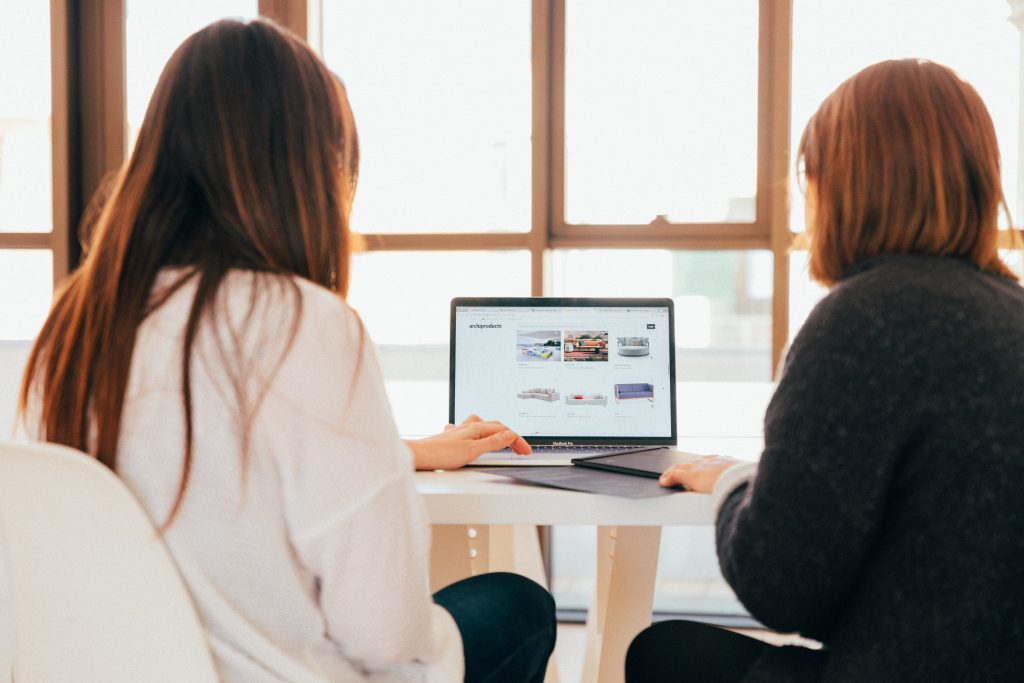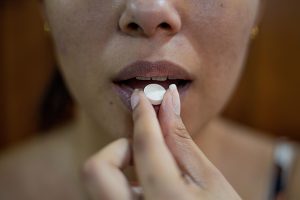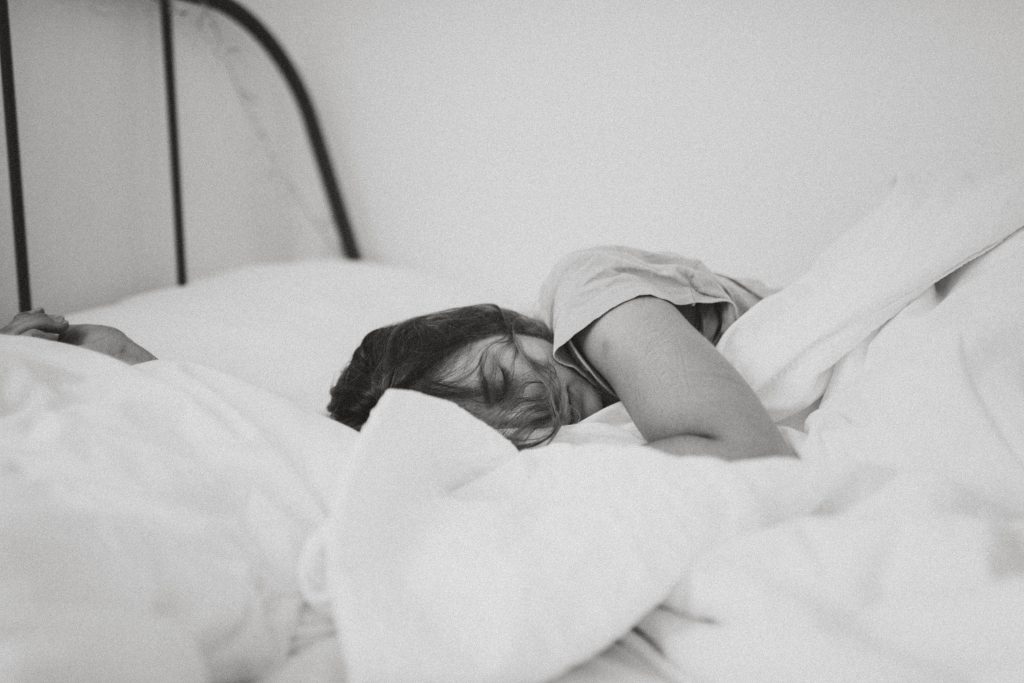9.6 Current Withdrawal Management Programs
Learning Objectives
By the end of this chapter you should be able to:
- Describe withdrawal management
- Understand the role of withdrawal management programs
- Summarize withdrawal management practices in Canada
- Identify 3 different withdrawal management programs
- Explain what services RAAM Clinics offer
- Describe the importance of OAT (Opioid Agonist Treatment) / MMT (Methadone Maintenance Treatment) including Suboxone
- Summarize the MAP (Managed Alcohol Program)
Withdrawal Management Programs

In this chapter we examine a variety of Withdrawal Management Programs (WMS) that include Harm Reduction Programs such as RAAM clinics, OAT (Opioid Agonist Treatment) / MMT (Methadone Maintenance Treatment) including Suboxone, MAP (Managed Alcohol Prevention) and Peer Supports.
WMS provide short-term care for voluntary patients with severe and persistent concurrent Disorders who are not medically stable to do a program as an outpatient. Some who access WMS are in a medical crisis and need a higher level of support and care. This would include physical crisis, mental crisis or multiple other components that will only allow WMS once the person has been medically cleared for the next stage.
Think of someone who is in crisis with many different components occurring at the same time. Now think of them as someone on a massive highway with many different lanes, so many choices of on or off ramps, many different drivers, vehicles all around them, and everyone in a hurry to get somewhere. This can be very overwhelming.

When you work with WMS there are many areas to take into consideration. This takes into consideration established and emerging medication and psychosocial treatments in a recovery-oriented mix. This will look different to each person, as many areas must be taken into consideration including diversity, equity (including health equity), and inclusion.
Types of Treatment and Services Offered include:
- inpatient stay
- comprehensive withdrawal management support from a multidisciplinary team
- participation in therapeutic activities
- care planning and referral for the next stage of recovery
Rapid Access to Addictions Medicine (RAAM) Clinics
The RAAM Clinic is an easy to access walk-in/drop-in clinic that people can visit to get help for substance use without an appointment or formal referral. RAAM Clinics are attached to hospitals and have a multi-disciplinary team. RAAM Clinics are situated in most provinces across Canada. Services are provided on a first come, first served basis, with some prioritization by clinic staff based on urgency. Contact the closest clinic to find out what their hours and days are.
What is a RAAM clinic and who is it for?
RAAM clinics are for:
- people looking to get help with high risk substance use and addictions
- interested in trying medical assistance to reduce or stop their substance use
- experience frequent intoxication or overdose symptoms, as well as unpleasant withdrawal symptoms when attempting to reduce or stop their substance use
- people who have substance-related health issues, such as hepatitis, pancreatitis, or infections, among others..
RAAM clinics are not for people who:
- need urgent medical attention for urgent physical problems or mental health symptoms such as psychosis (paranoia, delusions, hallucinations) or agitation
- active risk of harm to self or others
- requiring police/security involvement.
The people working at these clinics know how difficult it is to ask for help. You don’t need an appointment to go to the clinic – just show up during clinic hours with your Health card.
It is that medical treatment for problematic substance use is safe and effective.
What happens when you go to a RAAM clinic?

The clinic team will ask you about your history of substance use:
- when and how you started using
- how much and how frequently you use
- how it may impact your life and responsibilities
The RAAM clinic team then recommends some options around what treatment will likely work best for you, and allow you to decide.
There are four options:
- Advice – Many people who have to go to the hospital for a substance-related problem are injured as a result of using too much. In these cases, the RAAM clinic team will provide you with advice on how to make choices that will minimize the risks of substance use, such as tips on how to pace your use and situations to avoid.
- Counselling – The RAAM clinic team may refer you to counselling as part of your treatment. Counselling programs can include education on substances and healthy lifestyle choice, group and individual therapy sessions, help with developing coping skills, cognitive behavioural therapy, and peer support groups. The team will work with you to determine what form of counselling would be most helpful for you.
- Medications – Addiction to some substances, such as alcohol or opioids, can be treated with a medication that will help to lessen cravings, as well as the withdrawal symptoms that may accompany your early days of sobriety. Medication usually makes other types of treatment much more effective and reduces the risk of relapse. These medications are safe, effective, and non-addictive. The team will discuss your options with you.
- Support – If you’re feeling anxious or hesitant about going to the RAAM clinic, consider bringing a supportive person with you. Changing your substance use can be very difficult, and having someone with you while you speak to the team may make you feel less overwhelmed and less alone.

IMPORTANT – If you are seeking treatment for opioid addiction, abstinence (including withdrawal management/detoxification) is NOT recommended. Opioid Agonist Treatment (OAT) (the use of long-acting medications to treat withdrawal and prevent relapse) is recommended as a safe and effective way to treat your opioid addiction.
When you begin your recovery from opioid addiction, abstinence can place you at higher risk of overdose, medical harms and death. You are welcome to attend a RAAM clinic or contact other OAT providers to discuss your options.
YOU SHOULD KNOW
Individuals do not have to be substance-free for any length of time to access RAAM services. However, they must be able to have an informed conversation about treatment, understanding the risks and benefits of treatment options. If a person is too intoxicated to have an informed conversation, they may be asked to return at a later date or referred to another community service.
If an individual with opioid use disorder is to receive Opioid Agonist Treatment (OAT) with buprenorphine/naloxone (Suboxone), the time from last opioid use will factor into the decision on how to safely start the medication.There is no specific timeframe of required abstinence from opioids before attending RAAM
OPIOID AGONIST THERAPY (OAT)

How does Opioid Agonist Therapy (OAT) Work?
(OAT) is an effective treatment for addiction to opioid drugs such as heroin, oxycodone, hydromorphone (Dilaudid), fentanyl and Percocet. The therapy involves taking the opioid agonists methadone (Methadose) or buprenorphine (Suboxone). These medications work to prevent withdrawal and reduce cravings for opioid drugs. People who are addicted to opioid drugs can take OAT to help stabilize their lives and to reduce the harms related to their drug use
When a person is addicted to shorter-acting opioids, a long-acting opioid (methadone and buprenorphine) are used. The long-acting means that the drug works for a longer period of time by acting more slowly in the body. This prevents withdrawal for 24 to 36 hours without causing a person to get high. OAT reduces or eliminate cravings for opioid drugs. When combined with support, such as individual or group counselling, there are best outcomes.
More Information:
MMT (Methadone Maintenance Treatment)

Methadone is a medication primarily used to treat chronic pain and as a treatment for opioid use disorder. It is a controlled substance that is regulated under the Controlled Drugs and Substances Act (CDSA)(1), and the Narcotic Control Regulations (NCR).(2)
In the past, practitioners were required to obtain an exemption from Health Canada before they could prescribe, sell, provide or administer methadone.
Methadone (3) is a long-acting opiate, which is substituted for short acting opiates like fentanyl, Percocet, oxycodone, and heroin. This type of OAT manages the withdrawal symptoms a person experiences as withdrawal from opiates can be physically painful. It can also be emotionally distressing, particularly if the substance is being used as a coping tool. Evidence from research around the globe has demonstrated that methadone is an effective treatment; it can help people with an opioid addiction in more ways than one Suboxone (Buprenorphine/Naloxone).

Buprenorphine/naloxone, sold under the brand name Suboxone among others, is a fixed-dose combination medication that includes buprenorphine and naloxone. It is used to treat opioid use disorder, and reduces the mortality of opioid use disorder by 50%. It relieves cravings to use and withdrawal symptoms.
Is Suboxone legal in Canada?
Health Canada (4) has authorized 2 dosage forms of SUBOXONE (buprenorphine and naloxone), a sublingual tablet and soluble film, that are not bioequivalent at all doses and routes of administration.
Sublocade
Sublocade is one medication available for treating opioid addiction. It is an injectable form of buprenorphine. Sublocade injections are subcutaneous, or under the skin. The medication gradually releases the drug for 28 days. This process effectively manages opioid withdrawal symptoms and reduces cravings over the long term.
Sublocade injections should be used as part of a complete Sublocade treatment plan that includes counseling and other care services.
Is Sublocade legal in Canada?
Yes it is. Health Canada – Sublocade decision for the product seeking market authorization. The Regulatory Decision Summary includes the purpose of the submission and the reason for the decision.
Important Information
MAP (Managed Alcohol Prevention)

The MAP Program originally was considered withdrawal management but is now considered a Harm Reduction model. Originally when MAP were created it was to be harm reduction. It was quite controversial and created polarized views on the reasoning for such a program. The goal was to support an individual where they were at on the substance use continuum. It was important to assist with the withdrawals of Alcohol as one of the most widely used substances in Canada; alcohol use is on a spectrum.
You may think of a broader health perspective than substance use when you hear the word detoxification; in this context, detoxification or the preferred term, withdrawal management, is a medically assisted/managed program. Medications and devices can be used to manage withdrawal symptoms, prevent relapse, and treat co-occurring conditions. Withdrawal management is not in itself “treatment,” but only the first step in the treatment process.
In-Patient Withdrawal Management

In-patient withdrawal management is an important component of treatment, particularly for substances that are life threatening to withdraw from, like alcohol. Substances like opioids are painful to withdraw from, in which case some individuals may be prescribed opiate replacement therapy, including methadone or buprenorphine, which we will discuss below.
Many treatment centres are now offering withdrawal management with medical support. It is important when someone is medically fragile to make sure that they get the support that they need.
Activities
- Compare and contrast a program at a private facility with a provincially funded program.
- Are privately owned facilities allowed in Canada?
- Who licenses these facilities?
- What does the presence of private clinics indicate about healthcare?
Outpatient Withdrawal Management
Along with in-patient withdrawal management, people living in any province will need a health card may have access to out-patient withdrawal management. This program “combines functions of an outpatient (day program) withdrawal management (detox) and structured treatment, providing the support of a team-based approach” .
Food For Thought
- Why do you think someone might choose out-patient withdrawal management instead of in-patient? Think about intersectionality and the social determinants of health.
- What is the difference between the two?
Outpatient Treatment
For people who have completed a withdrawal management program, this is often not the end of their journey; it may be just the beginning. In many provinces and territories, options exist for people who are choosing to engage with a health care provider about their substance use. Each Health Authority provides a variety of outpatient treatment programs in various locations, from two-week full day programs to weekly appointments. Each province and territory have many different options.
Many withdrawal managements or Treatment facilities will also offer a outpatient option or community services so that it is an option for many, that wouldn’t have been able to access it before.
Medication Assisted Treatment (HAT – Heroin Assisted Treatment)
When we talk about using medication to treat substance use disorders, some people suggest it is not different, that in fact we are swapping one substance for another. This is a myth. For some individuals, using a different medication or a similar medication may reduce some of the harms of the substance.
This approach to treating substance use allowed individuals, in partnership with their healthcare provider, to manage their substance use like a chronic illness. For some, this was a novel approach to treating substance use; for others, it was a clear example of how programs based on a public health approach can change/save lives.
At one time in Canada there was a HAT program, but at this time there is not any offered in Canada.
Food For Thought
- Take a moment and think about how you feel about treating heroin use with medical-grade heroin.
- What does the evidence say about the safety and effectiveness of medication assisted treatment?
- What do you want to know more about?
- What are some of the challenges with programs like these?
Activities
- Review the following Centre for Addiction and Mental Health pamphlet on opiate agonist treatment.
- How long can someone use methadone or bupenorphine?
- Are there side effects of these medications?
- What are the positive aspects of OAT? Negative aspects?
- Create a poster for OAT. Include three main facts that you believe would help reduce the stigma of OAT.
Drug Court Programs (DCP)

Many people who use substances are incarcerated. Drug Treatment Court Programs (5) & Drug Treatment Court Services (6) are very active and productive in Canada.
In Toronto Drug Treatment Court Services are in Old City Hall downtown. They meet several times a week in court. Although through the pandemic the mandatory court attendance was done by zoom.
The program offers alternative criminal sentences for people who have been charged with crimes that occurred due to substances. There are different mandatory programs that those who access this program participate with, and have many other different options that are possible for them even if they are actively using. This can include counselling, medical support, housing, treatment, psychiatric and many other supports. Most people involved in these programs are involved for a year, but can request an extension if they feel they need to.
Through the years there are many amazing successes through this program, where some still volunteer in this area or become peer supports.
PEER SUPPORT

Who is on your team? What is a friend? Who can you trust and say anything to? For many this is not an option or something they’re familiar with. It is important to know who is on your team as a peer, friend, professional and knowing what their role actually is. It can be someone you can count on or trust to talk about problems or a bad day. Peer support builds on the concept of friendship, but a peer supporter is different than a friend.
Depending on the role, the peer support can be someone who’s had similar journeys, or at times, someone who is still on the journey, but perhaps a little further along. This can assist in both giving and receiving nonprofessional, nonclinical assistance from individuals with similar conditions or circumstances to achieve long-term recovery/health and wellness from many different lens or areas of concern, such as psychiatric, alcohol, and/or other drug-related problems.
Peer support is not only multi-faceted but it is different for everyone. Their journey with substance, mental health, crisis and many other areas are so individual, and it may be a surprise for many that they may not have known anyone else who’ve had the similar experienced. To be able to share with someone and to realize that there are others who’ve experienced that journey and found some healing, is such a powerful experience.
Peer support plays a role at all stages of substance use. It can be a long journey, or a short one, depending on the person. By having an informal peer support worker, it can happen in many different places or around many different situations such as discussing substances used, paraphernalia, safeties, clean supplies or almost anything you’d like to discuss.
This is called informal peer support, peer helping or natural helping.
Peer Support available:
- AA – Alcoholics Anonymous
- Active Aging Canada
- Aids Groups
- Al-anon – people caring about family/friends who are alcoholic
- Ala-teen -is a peer support group for teens who are struggling with the effects of someone else’s problem drinking
- ACA – Adult Children of Alcoholics
- any 12 step programs (can look up local meetings)
- Celebrate Recovery
- CMHA (Canadian Mental Health Association)
- CA (can look up local meetings)
- CoDA – Co-Dependents Anonymous
- Indigenous Groups
- GA – Gamblers Anonymous
- NA – Narcotics Anonymous
- Racialized peoples and communities
- Refuge Recovery – Buddhist Path to Recovering from Addiction
- 2SLGBTQIA+ peoples and communities
- Youth
- Seniors
Principles of Effective Treatment
The following key principles should form the basis of any effective treatment program:
- Substance use disorders are complex.
- No single treatment is right for everyone.
- People need to have quick access to treatment.
- Effective treatment addresses all of the individuals needs, not just their substance use.
- Staying in treatment long enough is critical.
- Counselling and other behavioural therapies are the most commonly used forms of treatment.
- Medications can be an important part of treatment, especially when combined with behavioural therapies.
- Treatment plans must be reviewed often and modified to fit the individuals changing needs.
- Treatment should address other possible mental health disorders.
- Treatment should address the social determinants of health.
- Medically assisted withdrawal is only the first stage of treatment.
- Substance use during treatment must be monitored continuously, to prevent overdose.
- Treatment programs should encourage individuals to test for HIV, hepatitis B and C, tuberculosis, and other blood borne illnesses as well as sexually transmitted infections if they engage in risky behaviours. This way individuals will have a more complete picture of their health.
- Treatment programs should teach individuals about steps they can take to reduce their risk of these illnesses (harm reduction).
Attribution:
“Principles of Effective Treatment” by by Jacqueline Schwab and Denise Salters is licensed under CC BY-NC-SA 4.0
For More Information on Withdrawal Management
- Provincial Guidelines for Biopsychosocial Plus Withdrawal Management Services in BC
- Medical Withdrawal Unit – CAMH
- Withdrawal Management Services in Canada: The National Treatment Indicators Report (2015-2016 Data) – CCSA
- Modernizing Withdrawal Management Services – The Canadian Journal of Addiction: June 2021 – Volume 12 – Issue 2 – p 33-38
Attribution:
ATTRIBUTION: This chapter is not covered by the adaptation statement, it is an original work, except where noted.
References
- Legislative Services Branch. (2023d, January 14). Consolidated federal laws of Canada, Controlled Drugs and Substances Act. https://laws-lois.justice.gc.ca/eng/acts/c-38.8/
- Legislative Services Branch. (2022, March 31). Consolidated federal laws of canada, Narcotic Control Regulations. https://laws-lois.justice.gc.ca/eng/Regulations/C.R.C.,_c._1041/index.html
- https://www.camh.ca/en/health-info/mental-illness-and-addiction-index/methadone
- Government of Canada, Health Canada, Communications and Public Affairs Branch, Public Affairs Directorate. (2021, January 7). Important Safety Information on SUBOXONE (buprenorphine and naloxone) and the Risk of Overdose or Underdose when Switching Between Dosage Forms or Routes of Administration – Recalls, advisories and safety alerts – Canada.ca. https://recalls-rappels.canada.ca/en/alert-recall/important-safety-information-suboxone-buprenorphine-and-naloxone-and-risk-overdose-or
- Regulatory Decision Summary for Sublocade. (2024, May 24). Drug and Health Products Portal. https://dhpp.hpfb-dgpsa.ca/review-documents/resource/RDS00462
- Government of Canada, Department of Justice, Electronic Communications. (2019, December 13). Drug Treatment Court Funding Program. https://www.justice.gc.ca/eng/fund-fina/gov-gouv/dtc-ttt.html
- Drug Treatment Court Services. (n.d.). CAMH. https://www.camh.ca/en/your-care/programs-and-services/drug-treatment-court-services

